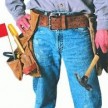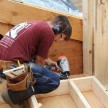Building Healthier Homes
Healthy Homes
Health Problems
Acting Surgeon General Steven K. Galson issued an official call to action to promote healthy homes, asserting that poorly constructed and ill-maintained residences can contribute to endemic health problems such as asthma and lead poisoning.
“In the United States today, the leading preventable causes of death, disease, and disability are asthma, lead poisoning, deaths in house fires, falls on stairs and from windows, burns and scald injuries, and drowning in bathtubs and pools,” Galson said during a press conference at the National Building Museum.
The National Center for Healthy Housing recommends the following practices for builders who want to construct healthier homes.
Ventilation Is Important
Make sure homes meet the American Society of Heating, Refrigerating, and Air-Conditioning Engineers standard 62.2 (ASHRAE 62.2, 2007).
This is an industry standard for ventilation for buildings of four stories or less. Mechanical ventilation helps ensure contaminants and humidity are exhausted to the outside and that the home receives clean, fresh air. Additionally, it can benefit occupant health by increasing comfort and reducing unplanned airflows which can result in moisture problems.
Smoke Detectors
Install proper smoke and CO2 alarms in all new homes.
Carbon monoxide causes 450 deaths and 15,000 emergency room visits per year, and death in a house fire is 50% more likely in homes without smoke alarms. Carbon monoxide and smoke alarms often cost less than $25, a small price to pay for safety.
Remove Radon
Add ducting for an active sub-slab soil depressurization radon reduction (fan-powered) system.
If tests determine that radon is a problem, the fans for the system can be added and activated. Radon is a tasteless, colorless, and odorless gas that is a decay product of uranium and occurs naturally in soil and rock. The main source of high-level radon pollution in buildings is surrounding uranium-containing soil such as granite, shale, phosphate, and pitchblende. Radon enters a home through cracks in walls, basement floors, foundations, and other openings.
Read entire article.
Source: Jenny Sullivan is senior editor, design, at BUILDER magazine.








